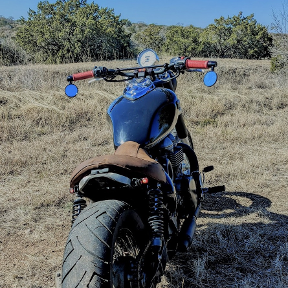Welcome to the Onshape forum! Ask questions and join in the discussions about everything Onshape.
First time visiting? Here are some places to start:- Looking for a certain topic? Check out the categories filter or use Search (upper right).
- Need support? Ask a question to our Community Support category.
- Please submit support tickets for bugs but you can request improvements in the Product Feedback category.
- Be respectful, on topic and if you see a problem, Flag it.
If you would like to contact our Community Manager personally, feel free to send a private message or an email.
3D Line ( Horizontal from Top view , Vertical from Side View)
 Lewis_Maina_Muthoni
Member, csevp Posts: 10 ✭✭
Lewis_Maina_Muthoni
Member, csevp Posts: 10 ✭✭
Hi Onshape Users, am glad to be part of Onshape enthusiasts. Am new to onshape with a maximum of 2 months, coming from other CAD software, this is the most amazing CAD software I have ever used, thanks to Onshape.
Am trying to model a Car body and I need a line that connects curve A to B, (see attched image) viewing from the Top view, the line is Horizontal, viewing from the Right view the line is vertical. NB Right plane is in the middle of the car body.
Can someone please help?
Thanks
Best Answers
-
 GregBrown
Member, Onshape Employees, csevp, pcbaevp Posts: 362
GregBrown
Member, Onshape Employees, csevp, pcbaevp Posts: 362  A Bridging Curve might provide another option?
A Bridging Curve might provide another option? 0
0 -
 billy2
Member, OS Professional, Mentor, Developers, User Group Leader Posts: 2,115 PRO
@Muthoni_Maina
billy2
Member, OS Professional, Mentor, Developers, User Group Leader Posts: 2,115 PRO
@Muthoni_Maina
Great start at surfacing! You've mastered curves which is a feat in itself.
As a 2nd try to your problem and the fact that several threads have popped up about surfacing on this forum, I offer this up as a possible next step to your example. I don't use that many curves when surfacing and try to generate control surfaces to construct my geometry. Below is an attempt at your geometry, it's a 2nd try and still needs a lot of work but it'll give you my approach to your problem.
https://cad.onshape.com/documents/7fb41efc3e90820ffcb95eca/w/8538cad1400bf7739a959cb5/e/9ddd15511e4be0f56b244671
This is a primary, secondary & tertiary surface arrangement:
This is where you're stuck and I want to show you how I get organic shapes to behave. Below are the primary and secondary surfaces:
These are my controls used to create these surfaces:
To create a smooth transition it's important to get the surfaces pointing towards one another and there's a lot of work that goes into building controls to allow this:
To be successful at surfacing it's best to build using layers of surfaces. You construct surfaces to construct surfaces. Also organize what you're doing because it can get chaotic after awhile.
Curves are only a start.
Curves are the beginning of surfaces but don't contain enough information to create a manifold properly. There's no direct at a point along a curve except for the tangent vector.
The 1st derivative at a point along a curve is the tangent vector at that point. That's it, you don't get anything else.
Curves do not contain direction moving away from the curve which makes them difficult to control a surface patch by themselves. You need 2 curves to define the direct of a surface from a curve. Which direction does the surface leave the curve?:
Ruled surfaces are a great way to add direction to a curve, play with them and master them.
All lot of people don't master curves which is the starting point of surfacing. I'd play with control surfaces. It does take time to develop a good set of controls allowing you to build a controllable manifold.
0 -
 dirk_van_der_vaart
Member Posts: 561 ✭✭✭
dirk_van_der_vaart
Member Posts: 561 ✭✭✭


Answers
@NeilCookeI Í have tried your suggestion but point A doesn't accept either coincident or pierce constraint, point B accepts only coincident constraint.
I would have to see the actual file, but sometimes pierce is fussy and needs to have the point very close to the actual position to work. I would try moving the unconstrained line closer to where it seems like it would end up, and then try selecting pierce. Also I've seen things where a sketch point will work for pierce, and then you can just snap the line or spline to the sketch point.
Simon Gatrall | Product Development Specialist | Open For Work
Learn more about the Gospel of Christ ( Here )
CADSharp - We make custom features and integrated Onshape apps! Learn How to FeatureScript Here 🔴
The Onsherpa | Reach peak Onshape productivity
www.theonsherpa.com
Great start at surfacing! You've mastered curves which is a feat in itself.
As a 2nd try to your problem and the fact that several threads have popped up about surfacing on this forum, I offer this up as a possible next step to your example. I don't use that many curves when surfacing and try to generate control surfaces to construct my geometry. Below is an attempt at your geometry, it's a 2nd try and still needs a lot of work but it'll give you my approach to your problem.
https://cad.onshape.com/documents/7fb41efc3e90820ffcb95eca/w/8538cad1400bf7739a959cb5/e/9ddd15511e4be0f56b244671
This is a primary, secondary & tertiary surface arrangement:
This is where you're stuck and I want to show you how I get organic shapes to behave. Below are the primary and secondary surfaces:
These are my controls used to create these surfaces:
To create a smooth transition it's important to get the surfaces pointing towards one another and there's a lot of work that goes into building controls to allow this:
To be successful at surfacing it's best to build using layers of surfaces. You construct surfaces to construct surfaces. Also organize what you're doing because it can get chaotic after awhile.
Curves are only a start.
Curves are the beginning of surfaces but don't contain enough information to create a manifold properly. There's no direct at a point along a curve except for the tangent vector.
The 1st derivative at a point along a curve is the tangent vector at that point. That's it, you don't get anything else.
Curves do not contain direction moving away from the curve which makes them difficult to control a surface patch by themselves. You need 2 curves to define the direct of a surface from a curve. Which direction does the surface leave the curve?:
Ruled surfaces are a great way to add direction to a curve, play with them and master them.
All lot of people don't master curves which is the starting point of surfacing. I'd play with control surfaces. It does take time to develop a good set of controls allowing you to build a controllable manifold.
https://cad.onshape.com/documents/a75232e47655976955ac7b3d/w/ea82bd68fdfbadf588cd8123/e/48f177d8992ff31e9d2c4197
what I did:
I used used @billy2 surfacing tips and created necessary surfaces.
I created two points as @dirk_van_der_vaart suggested about creating points.
I used @S1mon suggestion on creating a Bridging curve between two points.